A birthday salute by friend and former colleague Bob Greenberger…
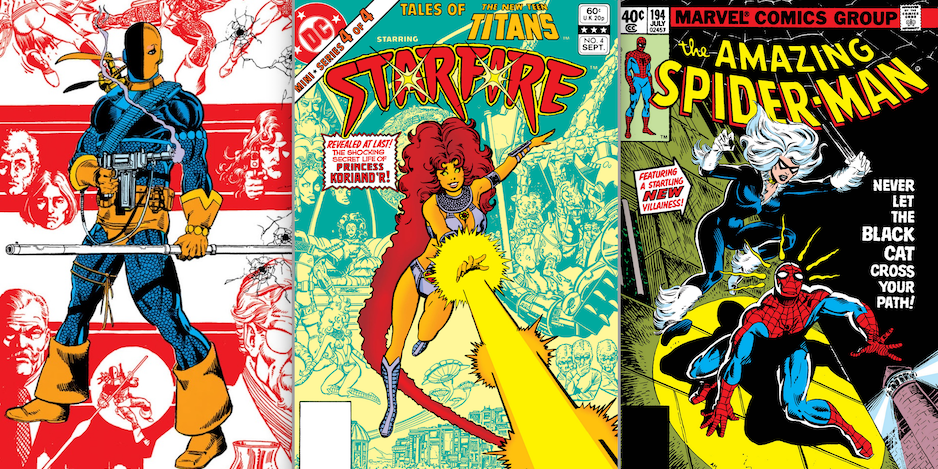
Marv Wolfman was born 75 years ago on May 13, 1946. He’s a huge favorite here at 13th Dimension — click here to check out THE MARV WOLFMAN INTERVIEWS — and so we’ve got a special column by historian and former colleague Bob Greenberger, celebrating the famed writer’s TOP 13 greatest character creations.
Oh, and in tandem with this piece, click here for HOW FANS REACTED WHEN THE NEW TEEN TITANS DEBUTED IN 1980.
Here’s Bob:
—
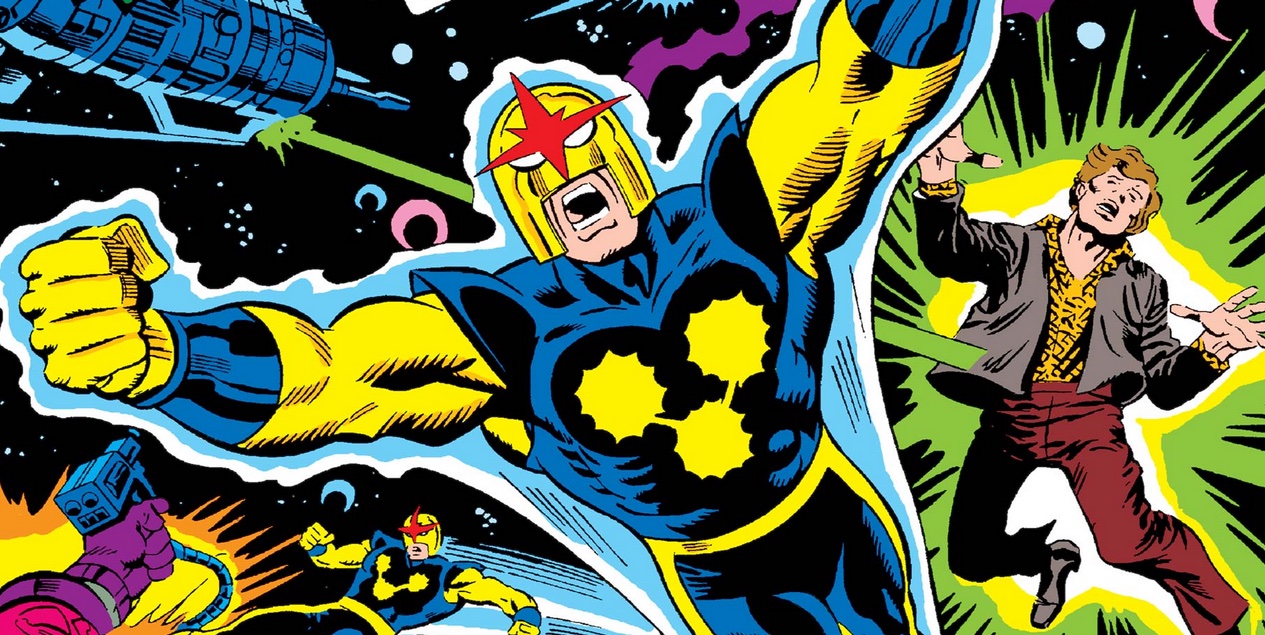
By ROBERT GREENBERGER
Marv Wolfman’s mom met his dad, they had sex and the DC Universe was never the same.
Marvelous Marv turns 75 today and since he is an accomplished writer and editor credited with creating countless heroes, villains, and supporting players for DC Comics and Marvel Comics, we’re celebrating his arrival by looking at 13 of his best creations (in alphabetical order to avoid fighting).
—
Bibbo Bibbowski. Created with Jerry Ordway, the Metropolis blu- collar working stiff was a regular at the Ace O’ Clubs bar when he first met his idol. This seeming innocuous moment in Adventures of Superman #428 (May 1987) resonated with readers and he kept making appearances.
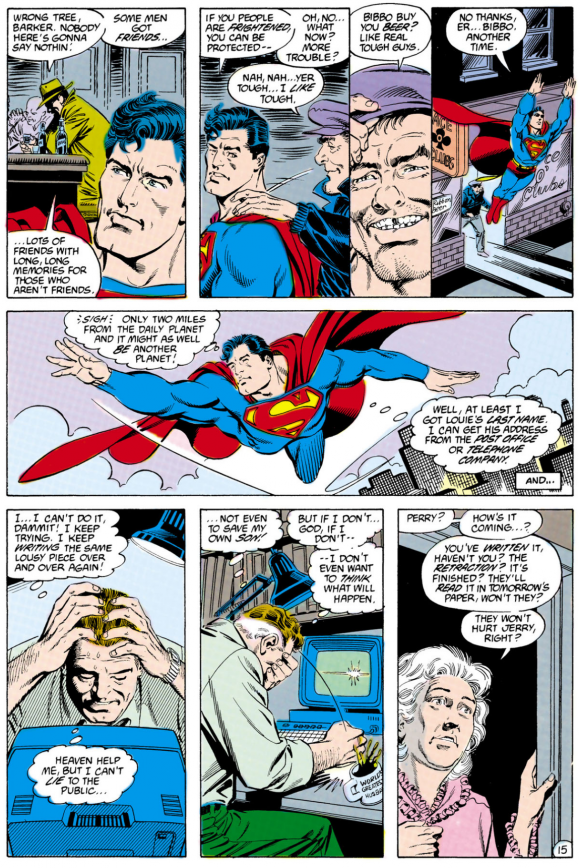
Ordway
His phrase that Superman was his “fav’rit” hero became his trademark and ever since, Bibbo has represented the world’s citizens who support the Man of Steel through thick and thin. Even after buying the bar, he remains an everyman whose superpower seems to be surviving retcons. He’s even made it to television and film (former Jimmy Olsen Jack Larson played a bartender named “Bo” in Superman Returns). One reason he may resonate so well is that he was based on a pal of Ordway’s.
—
Black Cat. One of Marv’s talents is creating characters to fill specific needs, such as Felicia Hardy, designed to be a foil for Spider-Woman when he was writing the character. He brought her with him when he was promoted to writing Amazing Spider-Man and Hardy has been a part of Peter Parker’s life ever since her arrival in Issue #194 (July 1979).
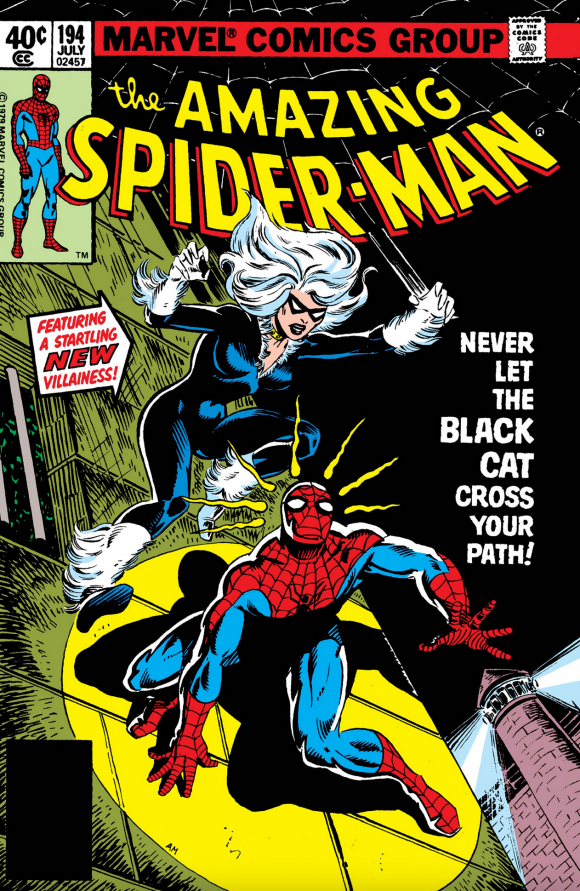
Al Milgrom
With a character design by Dave Cockrum, Marv gave her talents borrowed from the classic Tex Avery cartoon “Bad Luck Blackie.” There, a black cat brought anyone he crossed bad luck, as noted on his calling card: “Black Cat — Bad Luck Company — Paths Crossed–Guaranteed Bad Luck”.
Felicia was raised by a cat burglar of a dad and never had an easy life. Still, she had talent and used it to please herself, making the most of her skills. Her zest for life and slinky visual appeal cemented her in comics lore and mass media, from video games to animation.
—
Blade. When Marv settled in as the writer of Tomb of Dracula he inherited a cast of supporting characters along with the king of the vampires. But, once he got to know the players, he needed to begin bringing in fresh blood, so to speak. Enter Blade (Eric Brooks), who arrived in Tomb of Dracula #10 (July 1973) with art from Gene Colan and Tom Palmer. His prostitute mother was in labor when Deacon Frost drained her blood, but in the process passed on certain vampiric traits to the baby.
Colan credits Marv with the bandolier of wooden blades but the heroic Black man’s physique was pure Colan. He became a huge hit with fans and other creators.

Colan pencils, Jack Abel inks
Marv told me for Marvel Spotlight, “I knew if I let him, Blade would eclipse the other characters so I pulled him back and let original supporting characters Rachel, Frank and Quincy shine. I also wasn’t happy with my Blade dialogue, so I pulled him out of the book for a while — I think almost a year — and when I brought him back I played him a bit straighter. The early Blade dialogue was cliche ‘Marvel Black’ dialogue. Later on, I tried to make him more real. But it took growing up as a writer.”
The character grew beyond anyone’s expectations, debuting on screen in the first good Marvel feature film, with Wesley Snipes in the role. He’ll be played by two-time Oscar winner Mahershala Ali in the future.
—
Cyborg. For a white dude, Marv has added several significant Black characters to comics, notably Blade and Cyborg.
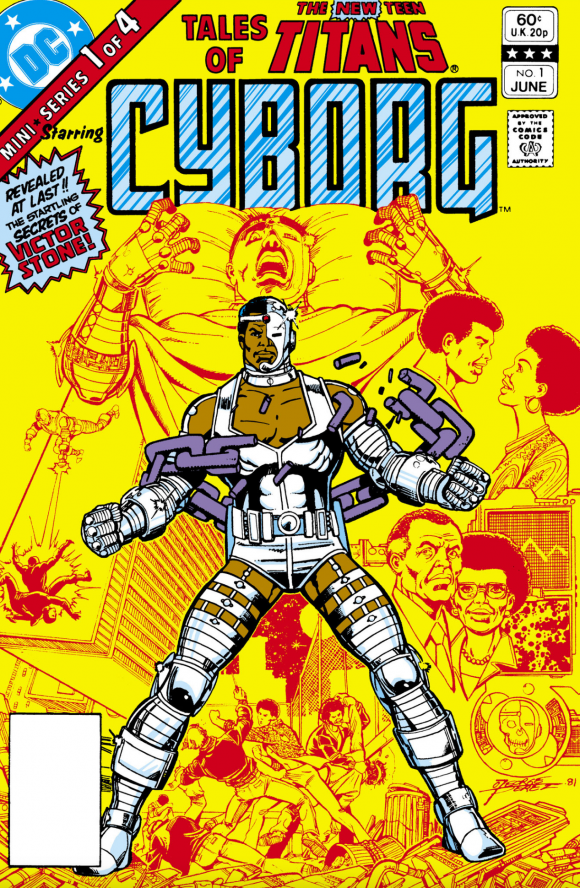
Perez
Co-created with George Pérez, Vic Stone was an athlete who suffered a near-death accident until his father Silas grafted cybernetic pieces to his body. While his life was saved, Vic felt less than human, hating who he had become. He brooded for a while until he fell in with the Teen Titans as seen in DC Comics Presents #26 (Oct. 1980). With his high-tech gear and interchangeable devices, he seemed at first to be a Swiss army knife hero until The New Teen Titans #8. In this classic day-in-the-life story, a chance encounter with kids in Central Park restored his proper sense of self.
Ever since, he has been a popular figure, traded between the Titans and Justice League, and featured in film, live-action television and animation.
—
Deathstroke. While the Teen Titans were about a family of friends, their deadliest human opponent was all about dysfunctional families. Slade Wilson arrived in The New Teen Titans #2 (Dec. 1980) but his back story was later revealed to be a variation of the super-soldier origin. He volunteered for the experiments that gave him enhanced strength, endurance and reflexes and had seen action in Korea and Vietnam.
By the time he fought the team, he was an older, wearier villain than readers were used to. He was also a bastard to his wife Adeline, and a neglectful father. His son, Grant, died because of his actions and his younger son Joseph had his vocal chords cut, only to become a Titan as Jericho. And later, post-Marv, we learned of his daughter, Rose, now known as Ravager.
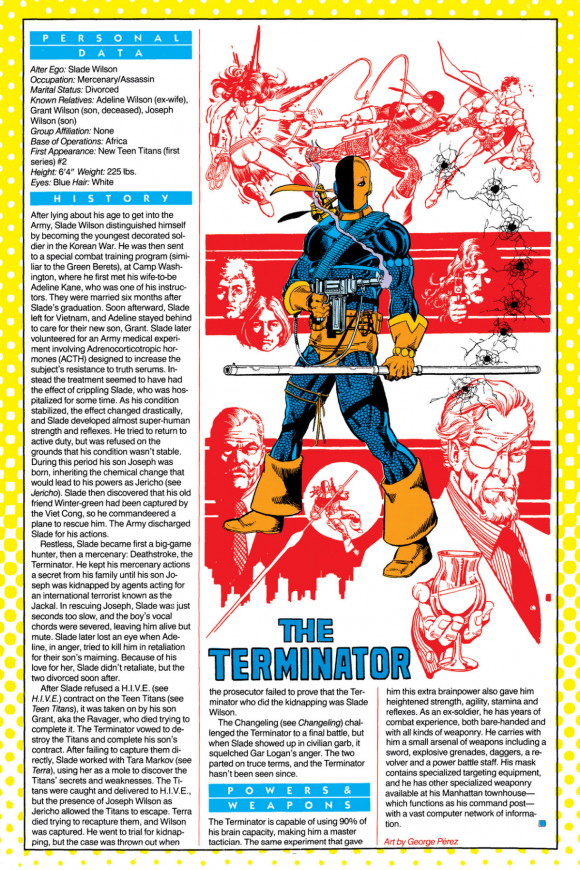
Perez
Deathstroke was also the mastermind behind the Titans’ greatest story, The Judas Contract, which saw him use teenage Terra (another great creation — #14 if this list went that far) to infiltrate the team and help take them down.
He quickly gained favor with fans and made numerous appearances before earning his own title. Mass media has used him more as a Batman foe, but he is truly the worst thing to happen to the Titans.
—
Tim Drake. Speaking of Batman, few may recall that it was Marv and George who were called on to create the third Robin. Once the votes were in and Jason Todd was toast, Editorial knew they needed a new sidekick.
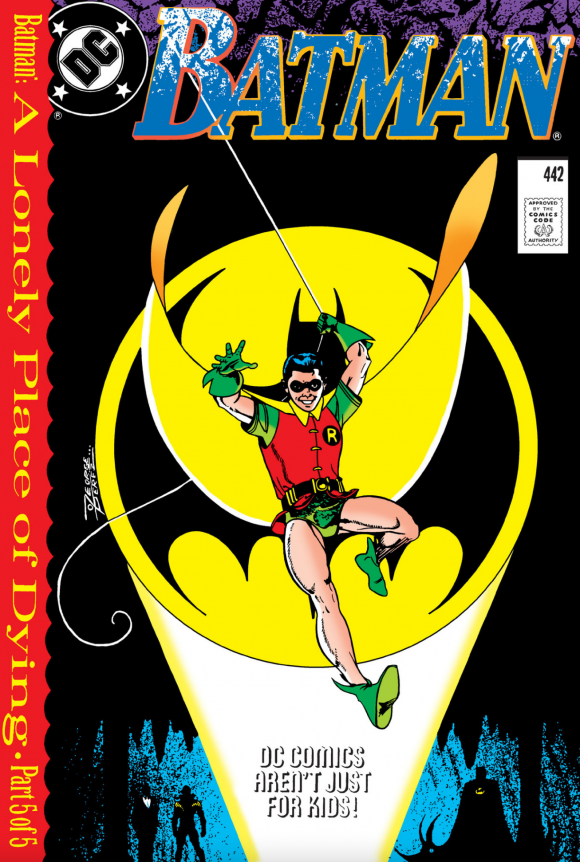
Perez
Given the stellar job the pair did with evolving Dick Grayson from Robin to Nightwing (#15), editor Denny O’Neil wasn’t taking chances. The series within a series, Batman: Year Three — by Marv with art by Pat Broderick — introduced Tim, who was also present when the Flying Graysons died. But his full origin was told in the Batman/New Titans crossover A Lonely Place of Dying, by Marv, George, Jim Aparo and others. As he grew up, Tim deduced that Dick was the Robin to Bruce Wayne’s Batman and after Jason’s death, took it upon himself to make sure the Dark Knight had an ally. Batman reluctantly agreed and so began Tim’s training before he was allowed to operate in public as the third Boy Wonder.
Tim is smart, a computer whiz, and a loyal friend, many of the qualities his rougher predecessor lacked. His very humanity set him apart and was embraced from his debut in Batman #436 (Aug. 1989).
—
Cat Grant. Marv liked to find foils for his heroes, hence Blade and Black Cat. But even the supporting players needed their counterparts and in Cat Grant, Marv and Jerry Ordway crafted one for Lois Lane, who never really had a rival before Adventures of Superman #424 (Jan. 1987). She seemed showy and shallow to Lois’s dogged style, but there was a darkness underneath her blonde hair and curves. There was the divorce, the struggle to stay sober, and properly raise her son Adam. She proved to have not only depth but some mad journalistic skills.
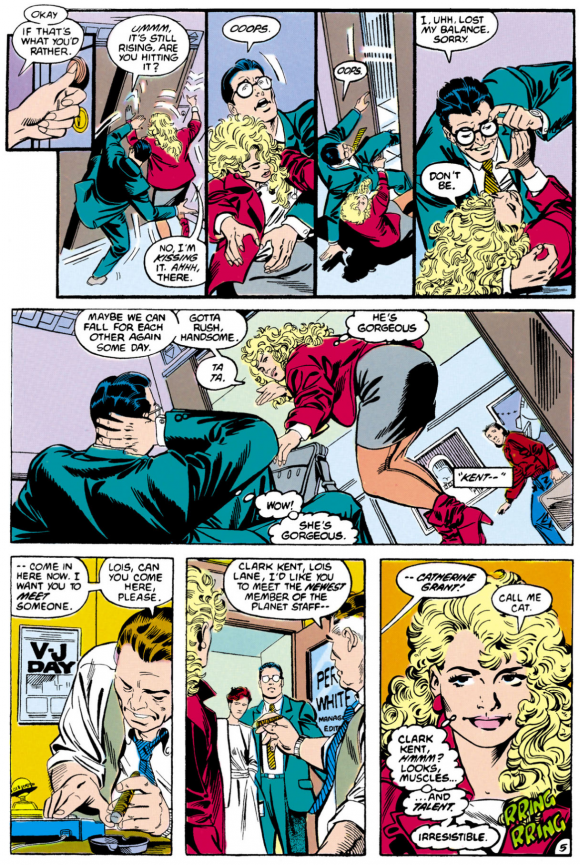
Ordway pencils, Mike Machlan inks
When Tracy Scoggins played her on Lois and Clark, she attended the DC Christmas party, which was thrown for the West Coast talent on the show’s Daily Planet set. I happened to be there as Marv introduced himself as her creator and they geeked out together, a classic moment. Cat has remained a part of DC’s mass media, including most recently on Supergirl.
—
Monitor (Mar Novu). Marv created this figure as a young comics fan and bided his time. Finally, when he and Len Wein were given permission to produce the History of the DC Universe, he had a place for his character. This mysterious figure would be seen throughout the DC line, watching and periodically abetting heroes and villains alike. What was his purpose and plan? Readers had to wait a few years before the project, retitled Crisis on Infinite Earths arrived.
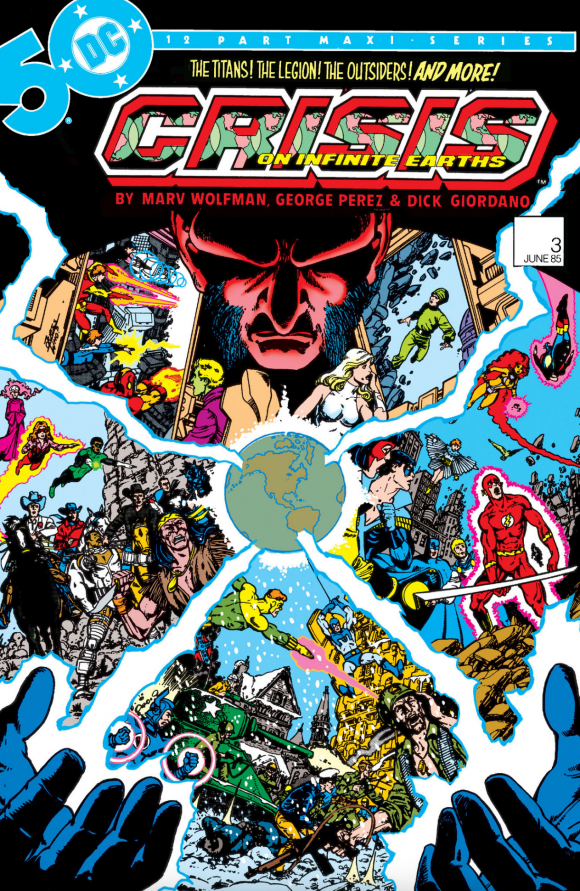
Perez
The physical appearance was designed by George, based on Marv’s ideas, but he had that distinct Pérez costume. He lurked in the shadows starting, naturally, in The New Teen Titans #21 (July 1982) and then was fully seen in G.I. Combat #274 (Feb. 1985).
When we finally learned of his purpose, readers understood he was one of the most pivotal characters in the entire DC history. With him came his protégé, Harbinger, and his evil counterpart, the Anti-Monitor (a name he and I regret was never improved on). Amazingly, these players all came to life on the CW’s Arrowverse shows, something impossible to imagine back then.
—
Nova. Like the Monitor, young Marv created this character in 1966 for a fanzine, Super Adventures. In time, he and Len Wein tweaked the character a bit and then he faded away. In the late 1970s, Marv resurrected Nova, taking bits from Marvel lore and, maybe, E.E. “Doc” Smith’s Lensmen (yes, the same source as the Green Lantern Corps) and introduced the world to Nova #1 (Sept 1976). The basic costume was refined for modern-day sensibilities by John Romita Sr., although the series was initially drawn by John Buscema.
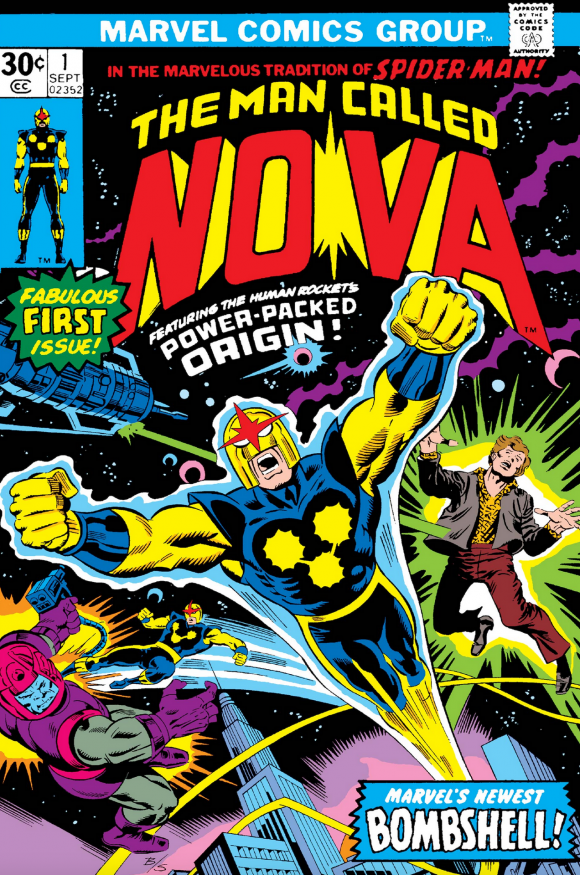
Rich Buckler pencils, Joe Sinnott inks
Here was a teen for current readers to root for, one with cosmic responsibilities — and homework. Whereas his inspiration saved the denizens of Queens and Manhattan with webs and wisecracks, Nova was dealing with interstellar threats, adding to the growing Marvel cosmology.
Marv had a nice 25-issue run but the sales weren’t strong so he tidied up the plot threads in Fantastic Four, which he was writing at the time. It fell to others, notably Fabian Nicieza, Dan Abnett, Andy Lanning, and more recently Sam Humphries, to let Richard Ryder fulfill his potential as a hero.
—
The Omega Men. When Marv was writing Green Lantern, with artist Joe Staton, he had the entire universe to play with. So, in addition to familiar aliens and threats, they worked to create new challenges for the Emerald Crusader. In this case, a ragtag team of freedom fighters crossed paths with the hero in Green Lantern #141 (June 1981), which proved to be the start of something big. These were refugees from the Vegan star system, which is where the Titan Starfire hailed from. We were beginning to see the DC cosmos coalesce in new and exciting ways.
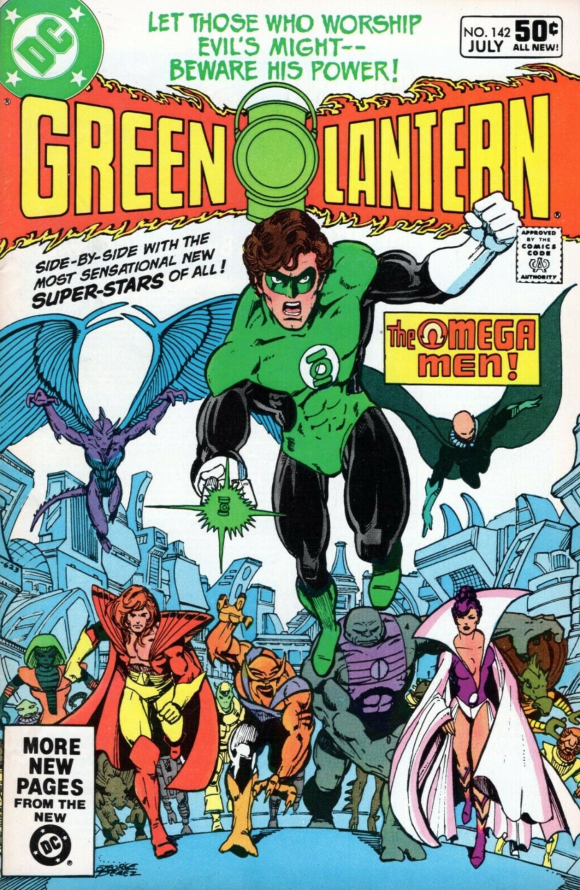
Perez
Marv used the heroes in several other titles but then turned them over to Roger Slifer and Keith Giffen for their own series, which is where some cool stories were told. (More importantly, it gave us Lobo.) One of the nicest things about the team was their variation in appearance so they felt more alien than previous SF teams.
—
Red Star. Marv believes in recycling, letting nothing go to waste. Among his earliest comics stories was one for Teen Titans #18 (Dec. 1968), cowritten with Len Wein and drawn by Bill Draut. Here, the team met their Russian counterpart, Starfire.
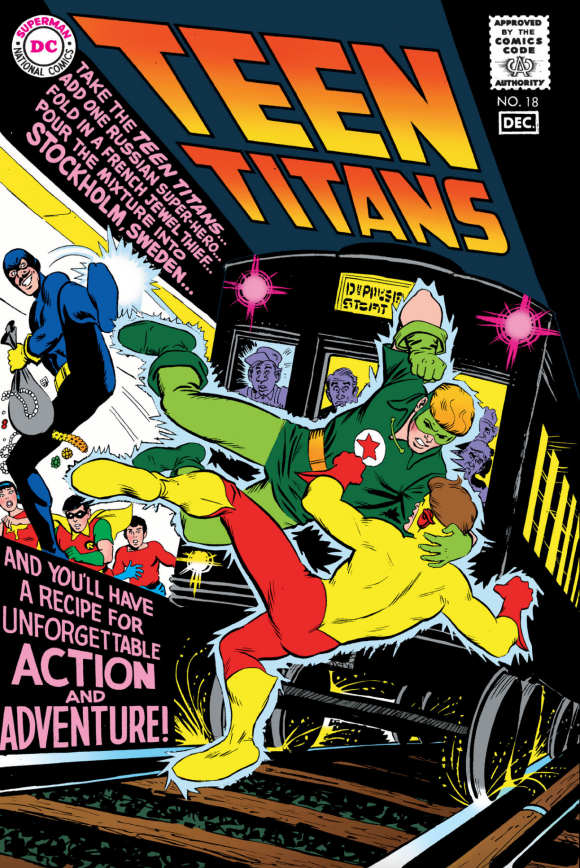
Nick Cardy
Leonid Kovar was altered by a chance spaceship crashing near the Yenisei River. He gained super-strength, super-speed, and pyrokinesis, and dutifully turned himself over to the Kremlin to serve the USSR. He fought the Titans, flirted a bit with Wonder Girl (who didn’t?), and vanished until Marv brought him back in New Teen Titans #18 (1982) where he most definitely needed a new codename.
Comics’ first Russian superhero is noteworthy, as was Marv’s attempts to go beyond the tried and true, even at the outset of his career when others stuck with the routine. He’s been seen here and there ever since.
—
Starfire. In between Leonid and Koriand’r, DC had a sci-fi sword-and-sorcery heroine named Starfire, but that Mike Vosburg series didn’t go anywhere so when Marv came back to DC in 1980, he could reuse the name.
The third time was the charm. In creating the new Titans, Marv wanted characters that would allow him to tell stories across genres, so while Raven gave the supernatural and Cyborg gave us high tech, Princess Koriand’r gave us the stars. Tall, curvaceous, and innocent, she was the catalyst that brought the team together in the 16-page preview seen in DC Comics Presents #26. With her golden skin, distinctive power bolts, and flowing curly hair, readers had never seen anything quite like her. When she kissed Dick Grayson to instantly learn English, he was smitten — and so were the readers.
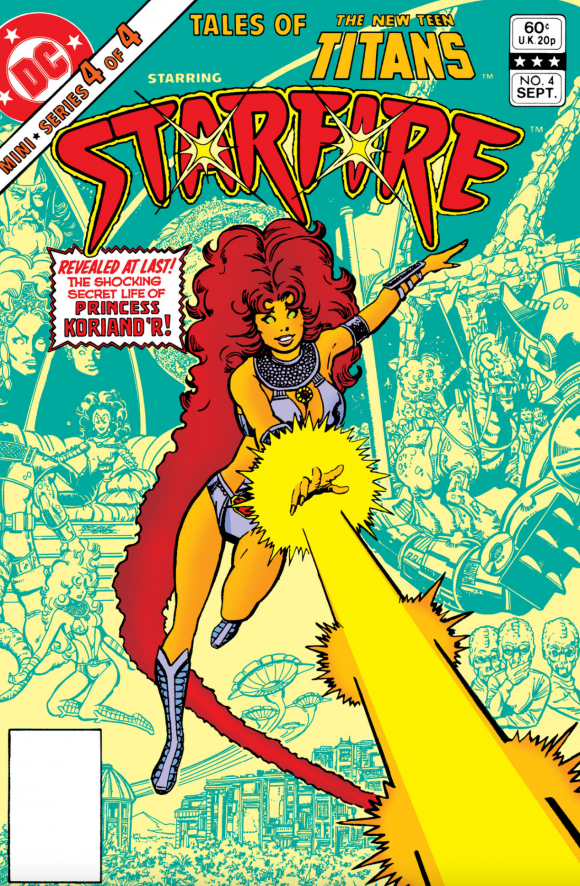
Perez
Her tragic story of Tamaran, the indignities she and her sister Blackfire had to endure, and the fall of her world, added depth to the hero. In time, her innocence was forged into experience and she proved to be a pivotal player throughout her tenure with the team.
Although she’s been repeatedly reinvented for new audiences, she remains a popular figure in comics, animation, and now live action.
—
Vigilante. Much as the violence of the early 1970s gave rise to the pulp-style Destroyer and Executioner, inspiring Gerry Conway to create Marvel’s Punisher, Marv saw a similar trend a decade later. With George, he created district attorney Adrian Chase, who delivered hooded justice as DC Comics’ second Vigilante.
Arriving as Chase in New Teen Titans #23 (September 1982), we had nearly a year of development before he donned the Vigilante costume in New Teen Titans Annual #2 (August 1983).
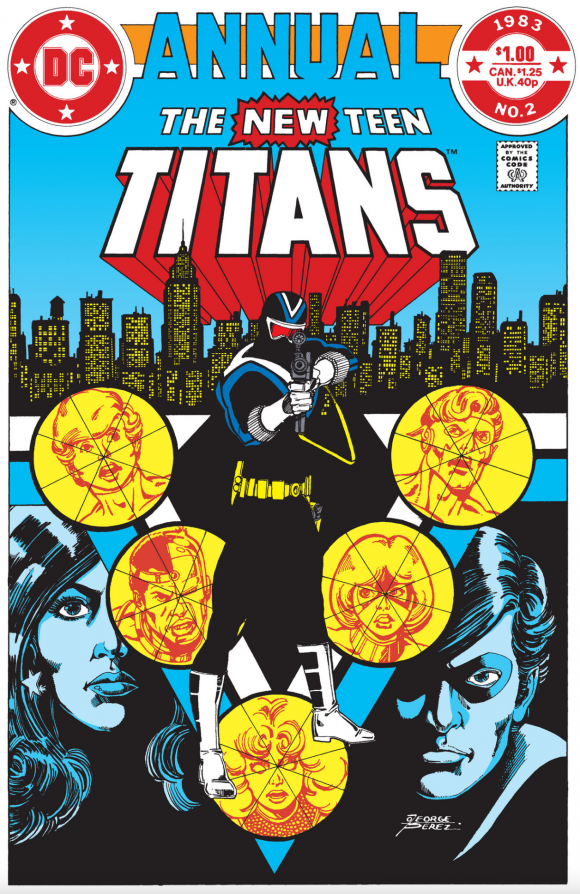
Perez
The dichotomy of law and justice had been previously explored by Marv during his tenure on Daredevil, which resulted in the introduction of Bullseye (#16), and here he had the chance to tackle those themes anew.
Much as the Omega Men found an audience, so too did Chase, who headlined his own series. He’s of course been seen in the Arrowverse and is said to be a character on HBO Max’s Peacemaker.
—
Those are my 13, saluting some 50-plus years of comics creativity. I was thrilled and proud to work with him at DC in the 1980s and continue to value his friendship.
Happy birthday, Marvelous Marv!
—
MORE
— How Fans Reacted When THE NEW TEEN TITANS Debuted in 1980. Click here.
— The Complete MARV WOLFMAN INTERVIEWS Index. Click here.
—
Make sure you check out Bob’s latest project: Thrilling Adventure Yarns 2021, the latest such anthology from Crazy 8 Press. (Click here for info, including how to order.)


May 13, 2021
I would add Baron Winter from the Night Force. He didn’t reach the longevity or popularity of the others, but he’s a really interesting character. Funny thing, recently re-reading his original run, I now read Winter’s dialogue with the voice of Raymond Reddington (James Spader) on the show The Blacklist. Just throw in an Eastern European accent, and you’ve got it.
May 13, 2021
So many great characters thanks Marv 🙂
May 13, 2021
I really enjoyed this article and appreciate the inclusion of some of the more obscure characters, but how could you omit Raven??
May 13, 2021
Because I was limited to 13 and already had two Titans. Blame Marv, he created too many cool characters.
May 13, 2021
The characters Mr. Wolfman created are indeed true mainstays in pop culture.
May 15, 2021
Bullseye is missing on that list. For me it is easily among his 6 best creations.